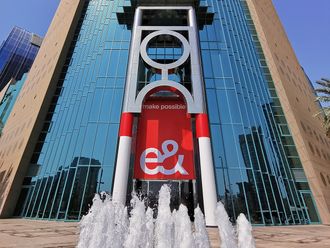Dubai
Last week the Dubai Financial Market General Index (DFMGI) gained 136.79 or 2.76 per cent to close at 5,097.82. That’s the high for the week, indicating a strong close and potential for a positive opening on Sunday. Strength was widespread, with 24 advancing issues and only eight declining, while volume reached an eight-week high.
Overall, last week’s high to low range was contained within the range of the prior week, as the index has been consolidating for the past couple of weeks, when looking at the weekly chart. But, on a daily basis the DFMGI is showing signs of trend continuation. Two weeks ago the index completed a 7.4 per cent correction at 4,807.50. It has since advanced 6.04 per cent off that low.
The key area to watch for resistance or a breakout through it, is around 5,193. Since April the index has encountered resistance around that price level on three separate occasions. This means it could do so again. At the same time a decisive daily close above that price level would signal a continuation of the eleven-week uptrend (begun off the corrective low of 3,730.91), and increases the possibility that the May high of 5,406.62 would eventually be exceeded.
On a short-term basis, support is around 4,977, with a key level down around 4,807.50. A drop below the lower level increases the probability of further declines as the price pattern of the eight-week uptrend is violated. Further, the possibility for the DFMGI to continue the correction begun off the May peak increases at that point. As always, a violation of key support could also lead to a relatively sideways consolidation phase.
Abu Dhabi
The Abu Dhabi Securities Exchange General Index (ADI) advanced 52.95 or 1.02 per cent last week to close at 5,233.18. Market breadth was bullish, with 26 advancing issues and 16 declining, while volume just barely exceeded the prior week’s level.
Last week’s action puts the ADI only 0.04 per cent away from the 5,255.35 peak reached in late-May, giving it a real shot of rising above it in the foreseeable future. As discussed in previous weeks, a daily close above that peak would not only create a new high for the multi-year uptrend, but also put the index clearly above the June 2008 peak for the second time, a technically significant accomplishment. A decisive daily close above 5,255.35 in the ADI would also be bullish for the upside potential of the DFMGI.
On a weekly basis the ADI has maintained a short-term uptrend for six weeks. Last week the index closed at the high of the week, and the highest close within a weekly range during that time, another positive for its potential.
Weekly support is at last week’s low of 5,132.22, followed by 5,089.85. A more significant support zone starts around 5,076, and then continues all the way down to 4,896.48. That range represents a three-week consolidation phase from late-July and early-August.
Stocks to watch
There are several stocks in the Dubai market whose daily charts have been forming symmetrical triangle consolidation patterns over the past couple a months. In each case, the patterns were preceded by a strong rally off the bottom of a sharp correction. This improves the odds for an eventual bullish upside breakout in each, which would also signal a continuation of the uptrend started from the corrective bottoms.
A symmetrical triangle chart formation is where there is a relatively sideways move in a stock, with the distance between both the highs and lows narrowing over the time. This allows one to draw an ascending line across the bottom of the pattern for support, and a declining line across the top for resistance. Once price moves either above the top line or below the bottom line the next direction is indicated. Given the decline in volatility as the pattern forms (low volatility leads to high volatility, and vice versa), once a breakout occurs price frequently (not always) accelerates in the direction of the breakout.
There is a symmetrical triangle pattern set-up in Air Arabia, Deyaar Development, and Salama Arab Insurance. In Air Arabia, an upside breakout is first triggered above 1.40, and confirmed on a move above 1.42. When measuring the triangle formation a minimum target of 1.56 is indicated. Alternatively, a drop below support at 1.33 signals a failure of this potentially bullish pattern.
For Deyaar, a bullish breakout occurs above 1.32, with the stock then targeting approximately 1.59. A failure of the pattern is indicated on trade below 1.17 support. In the case of SALAMA, it only recently found support at 0.79, thereby forming the triangle. An upside breakout is first indicated on trade above 0.86, and confirmed above 0.878. The minimum target for Salama is around 0.997 or 1.00.
An identification of these patterns doesn’t mean the breakouts will occur this week. However, in each of these stocks the pattern is now clear and they deserve to be watched closely.
Bruce Powers, CMT, is president of WideVision and chief technical analyst at MarketsToday.net. He is based in Dubai.












